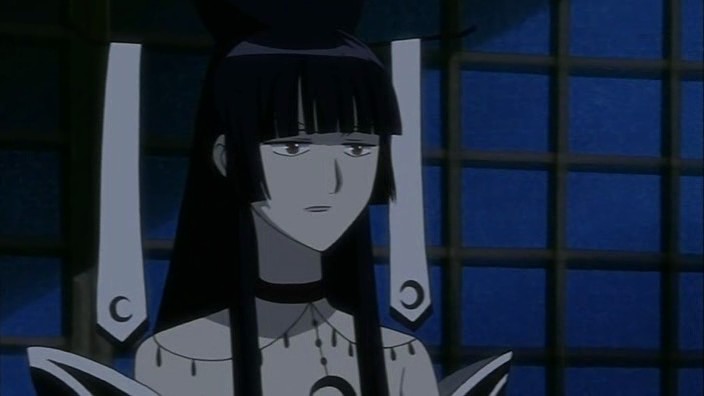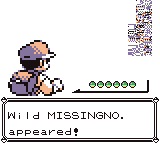So in the previous Here's an Idea! article, I made a post about how a simple Japanese manga echoed messages of nostalgic idealism - a childlike longing for the past to avoid facing the truth of age and death. Of course, whether or not that's true is totally up to the word of CLAMP, and those ladies usually keep pretty tight-lipped about any sort of release or PR. The nature of Here's an Idea! isn't necessarily to convey facts and be correct. The real point is clear in the title: it's an idea; an interpretation, if you will!
That being said, let's move on to an idea that implies the exact opposite thesis I last stated: what if we looked at CLAMP as the catalyst for thoughts of accepting death? What if I told you that everything I covered from Cardcaptors was rendered completely null and void?
Ladies and gentlemen: Tsubasa Reservoir Chronicles.
 |
| Get ready to have your minds blown. |
Also made by CLAMP, Tsubasa was a manga series released from 2003 to 2009 - significantly longer than their previous success in Cardcaptors. The story follows an archeologist named Syaoran Li on a dimensional quest to restore the memories of his loved one, Sakura. It's sounds like a basic-enough premise, and for the most part it is, so long as you only leave it at that.
Syaoran teams up with two other people traveling through different dimensions, Kurogane and Fai, as they fight their way to the reigning leader (usually corrupt and torturing the inhabitants) in each new world holding one of Sakura's memories hostage in the form of a glowing feather. It's a little bit of Doctor Who, a little bit of The Karate Kid and a whole lot of it being its own original ideas! In fact, it's quite odd to call it original, seeing as the entire manga and eventual Anime series is an alternate reality story of Cardcaptor Sakura.
 |
| Sakura and Li in Tsubasa. They're all grown up! Dude, I want that cloak and those goggles. |
What do I mean by that? I mean that several characters, along with their nuances, are carried over from Cardcaptors and into Tsubasa. Princess Sakura and Syaoran share the exact names, personalities and close relationship as the same Sakura and Li from their Cardcaptors personas. Sakura's friend, Tomoyo, also returns as Kurogane's commanding superior, and even Sakura's family makes a return, reprising similar roles. CLAMP recycled their existing characters and re-established them in an entirely new setting - it's the strangest writing technique I've ever heard (I'm not even sure if there's a trope name for this...), and it's a fascinating writing decision on their part. Hell, the manga clearly illustrates the Sakura from Tsubasa meeting the Sakura from Cardcaptors. There's gotta be some kind of dimensional time paradox or something happening in the plot here...
So what about this whole "REAL(ist?) Universe" thing I'm alluding to in the title? It makes sense that a fantasy-based story of a young girl juggling the transition between the fun of childhood and the struggle of responsibility in becoming a teenager is surely seen as idealistic when taken in such a light-hearted, optimistic direction, but how does a Fantasy-based story about a couple traveling along alternate dimensions reflect realism in any way? It's all based on a lot of psychology, so I'll try not to ramble too much. I also won't try to sound like an expert: I definitely do not hold any sort of psychology degree!
 |
| Sakura holding a gull feather, which she first thought was a memory. Pffft, nope! |
Fai is a wizard, and as such, he gave up a tattoo on his back which permitted him to use magic. Kurogane was hailed as the greatest ninja in Japan, and in exchange for the ability to time travel in hopes of becoming stronger (WARNING: irony alert!), the witch took away his sword, and thus, also took away a great ninja's honour. Syaoran and Sakura, arguably, paid the biggest price: despite Syaoran being able to cross dimensions to restore his loved one's memories, Sakura will never recover her memories of him.
Cognitive Dissonance is also an enemy of idealism - it's the middleman that takes the rose-coloured glasses off your face and smashes them on the floor. It's the best friend at your local bar breaking the truth that she's actually not that into you. It's the bomb that gets dropped on you when you want to believe one thing but can't deny the evidence of truth. Soldiers face it when they return from war, rape victims face it when they're betrayed by someone close - it's the MISSINGNO of our psyche that prevents contradictions from messing with our cerebral code. It's the gateway that takes someone out of idealistic denial and pushes them into truthful realism. Cognitive Dissonance is as scary as it sounds.
So Syaoran is a clone. That's a thing. Now get ready for a second mind-blower: Sakura is also a clone!
They're merely pawns in what is a larger plan to take over a kingdom by the main villain who's been pulling strings throughout the story.
Once Shaoran meets Tsubasa Li (The name of the real Syaoran), the clone remembers his purpose as the main villain's right-hand man and starts to go on a rampage. What was once an idealistic man hell-bent on collecting the feathers for his lover is now an emotionless, barely-sentient machine destroying entire towns with his bare hands in order to collect the feathers for his master - while this is yet another case of cognitive dissonance, it's also an example of naive realism, a branch of realist psychology that, ironically enough, is heavily influenced by biases.
Naive realism is when a collection of beliefs are excepted as fact by a group of people - this social connection established by a common belief mediates this "opinion" into a "fact." This bizarre but seemingly obvious psychological trickery is a sort of way the brain bypasses cognitive dissonance while also getting what it wants: to be right, and more importantly, those lovely endorphin shots. Amazingly enough, everyone in the group will undergo this same phenomena, and it's completely subconscious.
In the situation of Tsubasa, obviously Syaoran and his group all believed that collecting the feathers for Sakura would allow for her memories to return, but of course, ignoring slight plot details that would've revealed the truth about the clones and the villain were biases established by the entire group. Kurogane gets fishy about always being jumped by bad guys no matter where they go, but they pass it off as nothing more than dimension-exclusive occurrences...when they were all really connected.
But who cares about possible conspiracies? Syaoran and the gang ignore it because they don't want to believe it - naive realism, which is idealist in and of itself. It makes for a perfect contrast when the twist takes place. A confused cloned Syaoran attempting to make sense of his artificial humanity is a great example of the breaking of naive realism and the beginning of cognitive dissonance as he goes on a bloody rampage soon afterward.
Tsubasa is crazy-nuts in how deep a role the psychology plays in the story. It's the kind of story that's heavily embedded in the human condition - it's not worth reading a blog post about, honestly. You've gotta either watch it or read the manga! Of course though, if this is your entry into the series as a whole, then maybe this wasn't the worst place to start: instead of talking about the entire plot, I wanted to touch upon how the series containing the same characters as the idealist Cardcaptor Sakura are characterized and written to portray a very opposite mood in transitioning to a realist perspective. When you watch Cardcaptors and then immediately watch Tsubasa afterwards, it's like night and day in the most "I've-seen-this-but-I-don't-recognize-this" sort of way.
What do you think? Is Tsubasa Reservoir Chronicles an alternate reality of Cardcaptor Sakura in the most accurate way possible? Is it even significant in the theme of realism and contradiction? What would you do if you could cure you loved one of amnesia in exchange for their memories involving you? Post any and all thoughts in that comments section below!
Ready for a plot twist to explain more realist psychology?
Take this as a SPOILER WARNING.
So Syaoran is a clone. That's a thing. Now get ready for a second mind-blower: Sakura is also a clone!
 |
| Syaoran and...Syaoran are duking it out. Quick - someone make karate yells alongside this! |
Once Shaoran meets Tsubasa Li (The name of the real Syaoran), the clone remembers his purpose as the main villain's right-hand man and starts to go on a rampage. What was once an idealistic man hell-bent on collecting the feathers for his lover is now an emotionless, barely-sentient machine destroying entire towns with his bare hands in order to collect the feathers for his master - while this is yet another case of cognitive dissonance, it's also an example of naive realism, a branch of realist psychology that, ironically enough, is heavily influenced by biases.
 |
| I tried so hard to find a serious picture of Yuuko... I've failed you all. |
In the situation of Tsubasa, obviously Syaoran and his group all believed that collecting the feathers for Sakura would allow for her memories to return, but of course, ignoring slight plot details that would've revealed the truth about the clones and the villain were biases established by the entire group. Kurogane gets fishy about always being jumped by bad guys no matter where they go, but they pass it off as nothing more than dimension-exclusive occurrences...when they were all really connected.
But who cares about possible conspiracies? Syaoran and the gang ignore it because they don't want to believe it - naive realism, which is idealist in and of itself. It makes for a perfect contrast when the twist takes place. A confused cloned Syaoran attempting to make sense of his artificial humanity is a great example of the breaking of naive realism and the beginning of cognitive dissonance as he goes on a bloody rampage soon afterward.
Here's the opening theme to the Tsubasa Reservoir Chronicles TV series.
I especially enjoy the song as performed by Japanese Coldplay!
Tsubasa is crazy-nuts in how deep a role the psychology plays in the story. It's the kind of story that's heavily embedded in the human condition - it's not worth reading a blog post about, honestly. You've gotta either watch it or read the manga! Of course though, if this is your entry into the series as a whole, then maybe this wasn't the worst place to start: instead of talking about the entire plot, I wanted to touch upon how the series containing the same characters as the idealist Cardcaptor Sakura are characterized and written to portray a very opposite mood in transitioning to a realist perspective. When you watch Cardcaptors and then immediately watch Tsubasa afterwards, it's like night and day in the most "I've-seen-this-but-I-don't-recognize-this" sort of way.
What do you think? Is Tsubasa Reservoir Chronicles an alternate reality of Cardcaptor Sakura in the most accurate way possible? Is it even significant in the theme of realism and contradiction? What would you do if you could cure you loved one of amnesia in exchange for their memories involving you? Post any and all thoughts in that comments section below!


